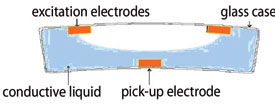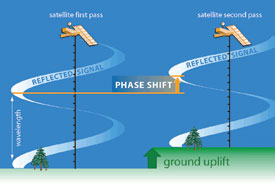簡介:現(xiàn)有的二氧化碳地質(zhì)封存方法大都是根據(jù)油氣行業(yè)的實(shí)踐經(jīng)驗(yàn)而產(chǎn)生的。在過去的幾十年中,從強(qiáng)化采收率(EOR)和其他碳捕捉封存(CCS)的方法中,獲取了許多教訓(xùn)和工藝技術(shù),這些經(jīng)驗(yàn)技術(shù)直接應(yīng)用于解決很多碳封存問題。
Practical experience in the oil and gas industry provides many ready-made solutions for CO2 geologic sequestration. In enhanced oil recovery (EOR) and other carbon capture and storage (CCS) methodologies, lessons learned and technologies developed over decades in the oilpatch have a direct application in meeting many of the challenges of CO2 sequestration.

Reviews by the industry have shown that pipe and cement are able to reliably isolate CO2 storage reservoirs for long periods of time. But one of the most significant advantages being drawn from experience is monitoring, verification, and accounting (MVA) during the injection and storage process.
Key to the success of long-term, cost-effective CO2 geologic sequestration is the ability to monitor for leaks, verify that the CO2 is stored permanently, and account for discrepancies. This MVA solution is being found in surface deformation monitoring (SDM) and its extensive history in EOR and hydraulic fracture stimulation applications.
Monitoring CO2 movement
SDM is based on measuring changes in ground dilation and subsidence caused by the injection or extraction of fluids or gases. As reservoir-level strain fields are altered due to the corresponding reservoir pressure increase or decrease, the effect of that strain change (displacement) radiates to the earth’s surface, where it is measured and used to monitor EOR projects sometimes with intra-day results that help optimize injection programs. Deformation monitoring is also used extensively in well stimulation efforts to map hydraulically created fractures.
Even at deeper injection depths, the million-ton-per-year rates of a CCS project are expected to generate ground movement well within the measurement range of the least sensitive SDM technique.
The SDM system integrates three basic technologies satellite-based interferometric synthetic aperture radar (InSAR), surface tiltmeters, and differential global positioning systems (DGPS).
SDM technologies

This figure shows monitoring technology cost vs. time.
InSAR has the ability to image large swaths of the earth’s surface and provide periodic updates on ground deformation. A typical InSAR scene can cover an area of 3,860 sq miles (10,000 sq km). Accuracy with just two scenes is in the centimeter range, but millimeter accuracy can be achieved by stacking many months of data.
Accuracy can be improved through integration with tiltmeter and DGPS, data which can provide finer resolution over smaller areas.
A tiltmeter is built around a highly sensitive electrolytic bubble level. It is essentially a high-tech carpenter’s level that can measure tilt movements down to one nanoradian or one billionth of a radian. Displacement measurements on the order of 1/10,000th of a millimeter are commonplace.
Tiltmeters are most often deployed in surface arrays, where they pick up ground deformation caused by subsurface strain changes. They can also be deployed in well bores, where they are used to map fracture height and other dimensional parameters. Subsea instruments are in the development stage.
In CCS projects, tiltmeter readings are commonly taken every few minutes, collated daily by a data acquisition computer, and processed through a geomechanical inversion model to determine what reservoir level changes must have occurred in order to cause the observed surface deformation. Deformation videos can be published daily or every few hours and posted for review.
One valuable attribute of tilt readings is that the shallower the strain change, the larger the resulting surface deformation. This allows tiltmeters to quickly identify out-of-zone fluid migration and cap rock integrity issues, which are the main focus of MVA programs.
Because of higher hardware cost, DGPS monitoring is normally used to supplement tiltmeter arrays and InSAR acquisition areas. The data is critical for providing a long-term and stable point of reference.
The differential method uses a minimum of two GPS receivers and sophisticated Kalman filtering to achieve millimeter-level measurements of horizontal and vertical motion. One receiver is usually located in an area that is expected to be relatively motionless, and subsequent receivers are located in regions of interest where motion is expected. Using the two stations allows compensation for atmospheric variations.
CCS application SDM has been applied on four
CCS projects to date, covering both enhanced coalbed methane (ECBM) and deep saline aquifer storage. Due to the limited injection volumes on the Phase II Department of Energy-funded projects in the US, the technology has been largely limited to containment and fracture monitoring where an out-of-zone migration of CO2 or developing fracture would be recognized as an anomaly. Of particular interest is the monitoring being performed at the InSalah project in Algeria, which is being managed by the InSalah Gas Joint Industry Project (BP, StatoilHydro, and Sonatrach).
The InSalah project injects an average of 1,000 MMscf of CO2 per month (three fourths of a million tonnes of CO2 per year) into the saline aquifer zone below a gas-producing horizon at approximately 6,562 ft (2,000 m) total vertical depth. Being the world’s first CO2 storage operation in an actively produced gas reservoir, InSalah may ultimately store as much as 17 Mt CO2.
InSalah is currently being monitored using InSAR, with the installation of a tiltmeter array and DGPS stations planned for later in 2009 to obtain finer temporal results and resolution over a portion of the field. While the CO2 injection rate at InSalah is only 20% of what is expected with CCS at large-scale coal-fired power plants, almost 20 mm of ground dilation has been observed over each of its three horizontal injectors, which is well within the sensitivity of InSAR. While this may seem like a lot, the observed motion is just a fraction of that seen with shallow steam EOR wells, where the reservoir undergoes a combination of thermal and pressure-induced stress.
While seeing that the ground movement due to CO2 injection is measureable, analyzing these data to determine reservoir-level fluid movement is the ultimate goal. If it is possibile to identify with enough certainty whether the CO2 is staying in zone and get real-time notification of caprock integrity issues, the primary concern of regulators will be met. If that can be done at a cost that is an order of magnitude lower than 4-D seismic while providing monthly or, in the case of tiltmeters, near real-time results, it will succeed in keeping the public’s utility costs down and assuage their fears of a major leak, which will foster public acceptance of CCS.
Leveraging past experience
SDM is just one of many monitoring techniques that are being transitioned from oil and gas monitoring to CCS. Pressure and temperature monitoring, vertical seismic profiling, tracers, and 4-D seismic are just some of the many techniques that are proving effective at various points in the lifecycle of a CCS project. The challenge will be to pick the technology mix at each phase of the project that meets or exceeds the monitoring requirements of the site at the best possible cost.
The oil and gas industry has been injecting CO2 and natural gas into the ground for many decades and has a vast body of experience in operating these fields within their safe operating limits. To fast-track CCS implementations, the industry must leverage its past experience while continuing to look for innovative new techniques.
楊寶劍 是全球石油網(wǎng)的高級(jí)技術(shù)編輯,在石油技術(shù)資訊行業(yè)有八年的學(xué)識(shí)和經(jīng)驗(yàn)。他源源不斷地提供石油行業(yè)全球最新的技術(shù)創(chuàng)新、研發(fā)成果、現(xiàn)場應(yīng)用情況等信息。如果你對(duì)“新技術(shù)新產(chǎn)品”的內(nèi)容有任何問題或建議,請(qǐng)聯(lián)系楊寶劍編輯 +86 10-58236512 Email:allenyo@zhenweiexpo.com 歡迎您提供手中的最新技術(shù)文章!

